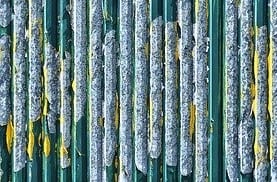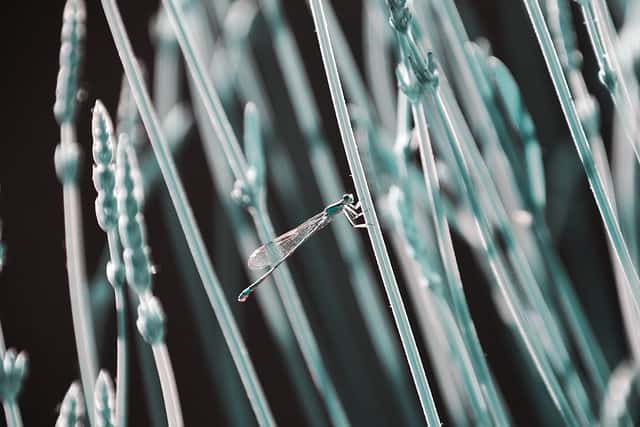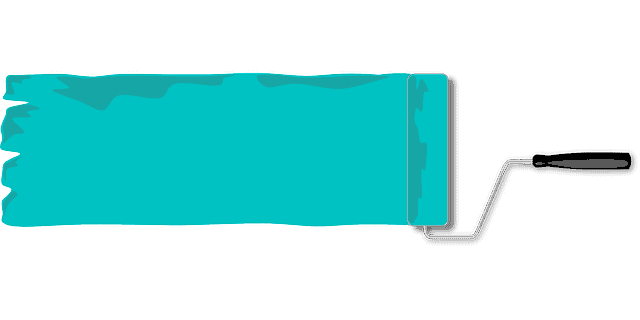How to Remove Acrylic Paint from Concrete
Today’s question came from Jake, one of our avid painting blog readers. The question relates to; how to remove acrylic paint from concrete. Compared to oil-based paint, acrylic paint (being water-based) will be easier to clean.

In summary, use a rag to wipe off the wet paint from concrete. Dip your scrub brush in some soapy water and scrub the concrete wall.
Use more soap solution to clean up a lot of the wet paint and remove it quickly. Soak all the wet paint using a sponge and finally rinse the concrete surface using freshwater through a high-pressure hose. Repeat the process until all the paint is removed. See Also: Acrylic Paint for Pouring.
Acrylic paints tend to dry quite fast while also becoming water-resistant and sturdy once dried. Could he acrylic coat be challenging to remove from concrete?
So, concreting on the flaws of acrylic paint, below, I’ve outlined how to remove the paint from concrete. The critical flaws are it is destroyed by both acrylic cleaner and water.
Details: How to Remove Acrylic Paint from Concrete
Compared to oil-based paints (like the exterior paint to prevent mold), acrylic paints are classified as being water-soluble and thus will b simpler to clean.
You can remove both wet and dry acrylic paint. Just like using a paint stripper for metal, acrylic paint that’s wet will be simpler to remove.
Requirements to Remove acrylic paint
- A pressure washer or Hose
- Paintbrush
- Bucket
- Protective Gear
- Soapy water solution
- Paint stripper or Acrylic paint remover
- Scrub brush
- Putty Knife, Razor or Paint Scraper
- Sponge and Rags
1. Method 1: For Wet Acrylic Paint – Using Soapy Water + Scrub brush
You can use a water-soaked rag to clean up your wet acrylic paint without damaging the concrete surface. This is possible with dry acrylic paint, but you’ll require some acrylic paint remover.
Step #1:
For the acrylic paint that’s still fresh on the concrete surface – I recommend using soapy water and a rag or scraper. So, prepare some soapy water solution (properly mixed-up) in a bucket.
For wet acrylic paint, which is easier to remove than dried-on type, you’ll need to soak it up with soapy water. But dried paint will require a paintbrush, acrylic paint remover, and some little muscle.
Step #2:
Next, apply the soapy water into the concrete surfacing having acrylic paint. Use a rag to remove/ clean most or all of the wet paint on the concrete surface.
Then, use a scrub brush and soapy water to scrub the surface (remember it is water-soluble). Put some soap solution into a bucket and dip your scrub brush inside – scrub the concrete.
When most of the paint is washed down, hose the concrete surface using freshwater. The soap solution will dilute all the wet paint, and hence it’ll be simple to remove – repeat until all paint is removed.
Check this latex vs acrylic paint comparison guide.
2. Method 2: Acrylic Paint Remover/ Stripper for Old or Dried Acrylic Paint
The acrylic paint remover will handle any old or dried acrylic paint that proves challenging for soapy water, rag, and scrub brush. The remover readily dissolves the acrylic paint’s resin.
Step #1: Prepare the Concrete Surface
The first thing you need to collect materials needed to remove your acrylic paint from concrete. Take a vacuum or broom to clean your painted concrete surfaces.
Removing the debris or dirt on the concrete will get the surface ready for action. Further, get some paint scraper to remove a little more acrylic paint from the concrete.
Step #2: Apply Some Acrylic Paint Remover
Next, take your paint remover to accomplish the task – for my case, I use the SmartStrip Advanced Acrylic Remover. It’ll work well for the environment, substrates, and its user while easily removing the acrylic from concrete.
Use a scraper to remove most of the dried paint. The scraper may be either a shovel, utility knife, or putty knife. The paint remover must work excellently with acrylic paints to be worth the trial.
- Pour some paint stripper (e.g., for furniture) or acrylic paint remover on the painted concrete. – you’ll get these products in your local hardware outlet. Check this too: Paints suitable for concrete.
- Envelop the oil-stained area using a stripper-soaked rag – this makes the place moist – allow it to settle for some hours – and thus, the pain will be softened.
Leave the remover to work for about 1-8 hours to effectively strip off the acrylic paint.
Step #3: Scrub Concrete Surface
Next, use a scraper on the stained wall – use together with soapy water. Ensure to rinse the wall surface thoroughly.
Check for any residue and reapply your stripper. Let the surface sit in that condition for 1 hour before finally conducting a thorough scrub.
However, I would recommend using a power or pressure washer for paint removal if the are is larger. The power washer machine will allow effective removal of all dried paint.
Use a paintbrush to apply some stripper for the areas you’d consider as trouble spots. Finally, power-wash the wall as this helps remove your dried paint. See Also: Acrylic Paint for Canvas
Step #4: Wash the Concrete Surface
Finally, its time to undertake the ultimate wash. So, hose the concrete surface with clean water. But fir your open-air concrete such as the garage floor surfaces or driveways, you may need to get a power washer.
The power washers will effectively clean or wash down larger areas. You’ll get the machines for cheap (with the hiring option being the best) at most local stores.
3. Method 3: Acetone + Razor Scraper
For this method, pour the acetone on the paint stain and then get your razor scraper to remove the dried paint. Also, use some paper towels to clean up the paint residual.
I recommend you get some stripper gel to remove any other remaining stain. Use soapy and warm water to effectively brush the remaining residue – you can also vacuum/ pressure washer.
See Also: Spray Paints for Graffiti
Power washers will remove most of the dried acrylic paints even on larger surfaces with much ease. However, use a paintbrush to apply some paint stripper on the trouble spots – and finally, power-wash the concrete.
In case the paint thinner fails to remove the acrylic paint, apply muriatic acid. This material is highly corrosive and thus you must wear protective gear including goggles and gloves.
Muriatic acid must also be applied in the adequately ventilated areas or you’ll require to put on a respirator. Also, adhere to the manufactures instructions – like correct water-to-water parts.
4. Method 4: Blasting Method with a Sand Blaster
Step #1: Get the Blasting Unit
This method will be required for removing a load of acrylic paint from the concrete surfaces. I recommend renting a good blaster for one of your favorite local stores.
Even though one of your powerful blasters could generate intimidating sound, this technique won’t harm the environment like using the other chemical products such as a paint remover or stripper.
Further, get your baking soda (sodium bicarbonate) that’s the industrial type – it’ll be coarser compared to the food-grade sodium bicarbonate. I recommend the ALC-Keysco 40002 Blaster.
Step #2: Wear Protective Gear
While you’re cleaning the concrete surface through blasting, it’ll help to put on a respirator. Therefore, you won’t inhale chemicals or debris when you wear goggles, gloves, and protective clothes.
Ensure the reservoir of your blaster is filled with baking soda. Adhere to the label instructions for appropriate machine set up and loading of the sodium bicarbonate.
Step #3: Blast the Painted Concreate
Further, ensure that the blaster valves are sealed and closed effectively prior to starting the machine. Stand about a foot from the painted concrete and blast the area.
Finally, clean the blasted surface by hosing it down with water. This will clean the backing soda and paint chips. But don’t let the sodium bicarbonate to land on trees, bushes, and flowers. See Also: Spray Paints for Plastic.
Conclusion
On how to remove acrylic paint from concrete, you must know the different methods for working on either wet or dry acrylic paint (water-based paint) sitting on such surfaces.
Also, ensure to ultimately clean the concrete surface using water and soap (solution) and get a scrub brush as it’ll get into the deeper crevices or crack of the concrete.
Finally, Acrylic paint Removers are a great method to remove the dried and tough acrylic paints on concrete.




